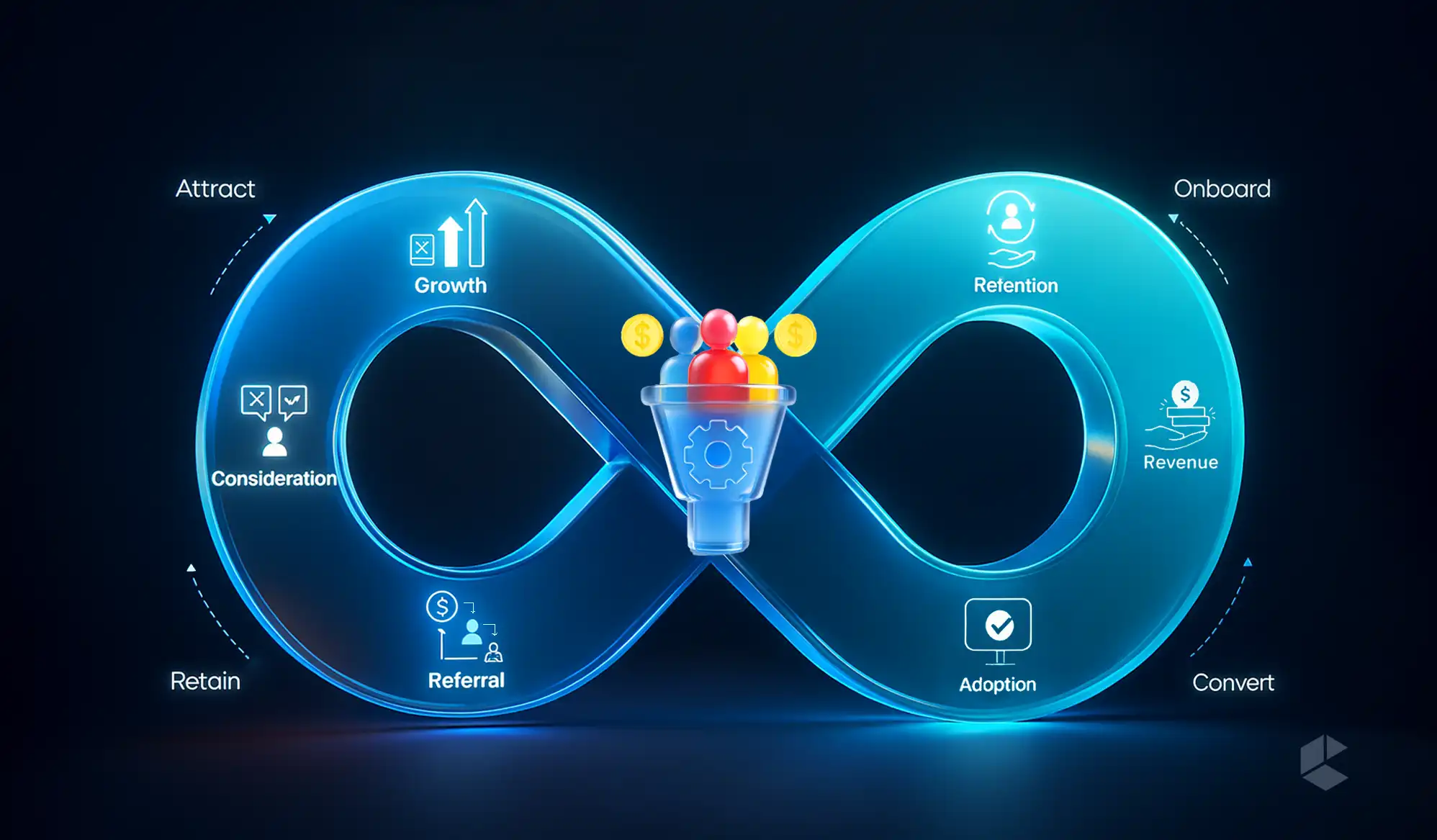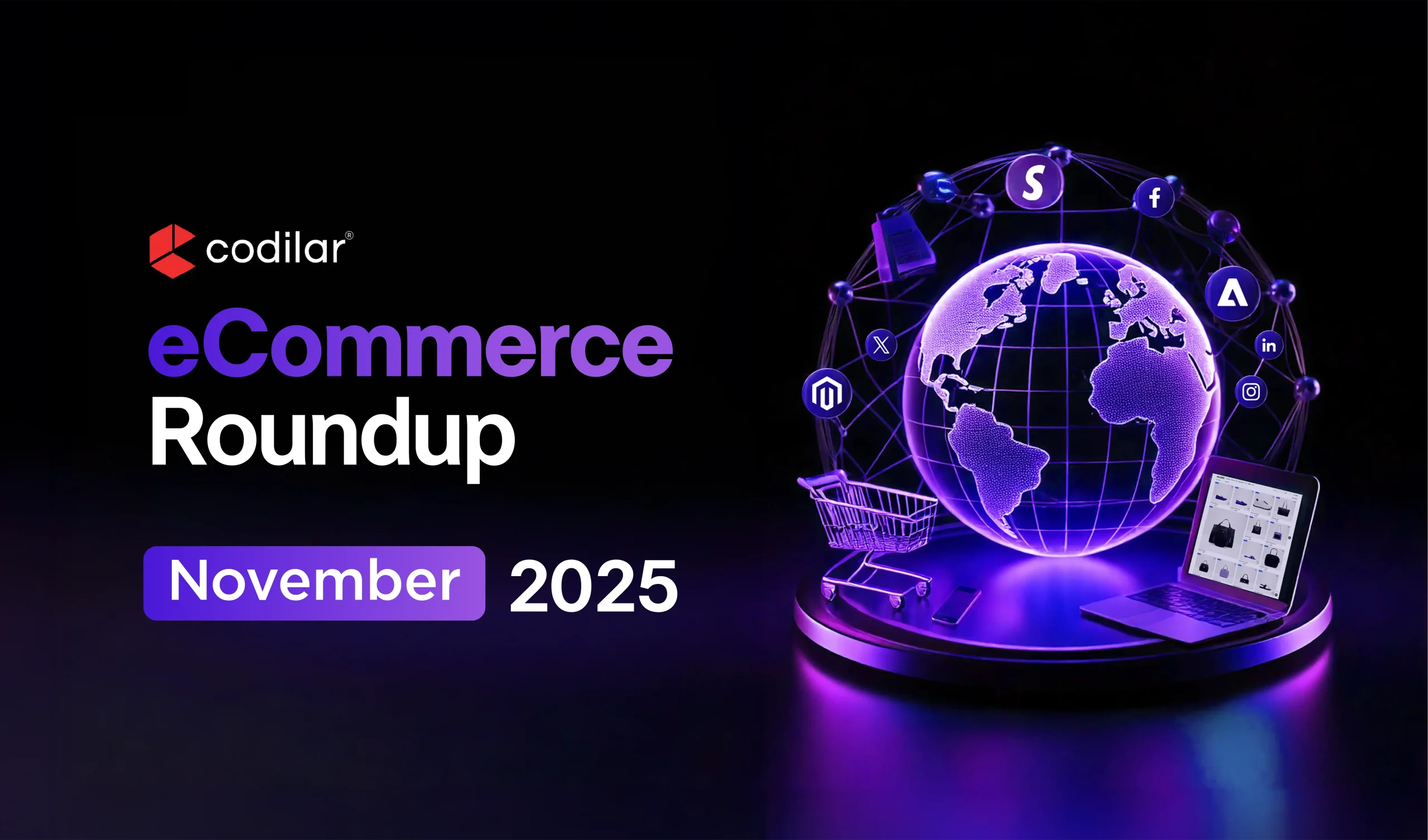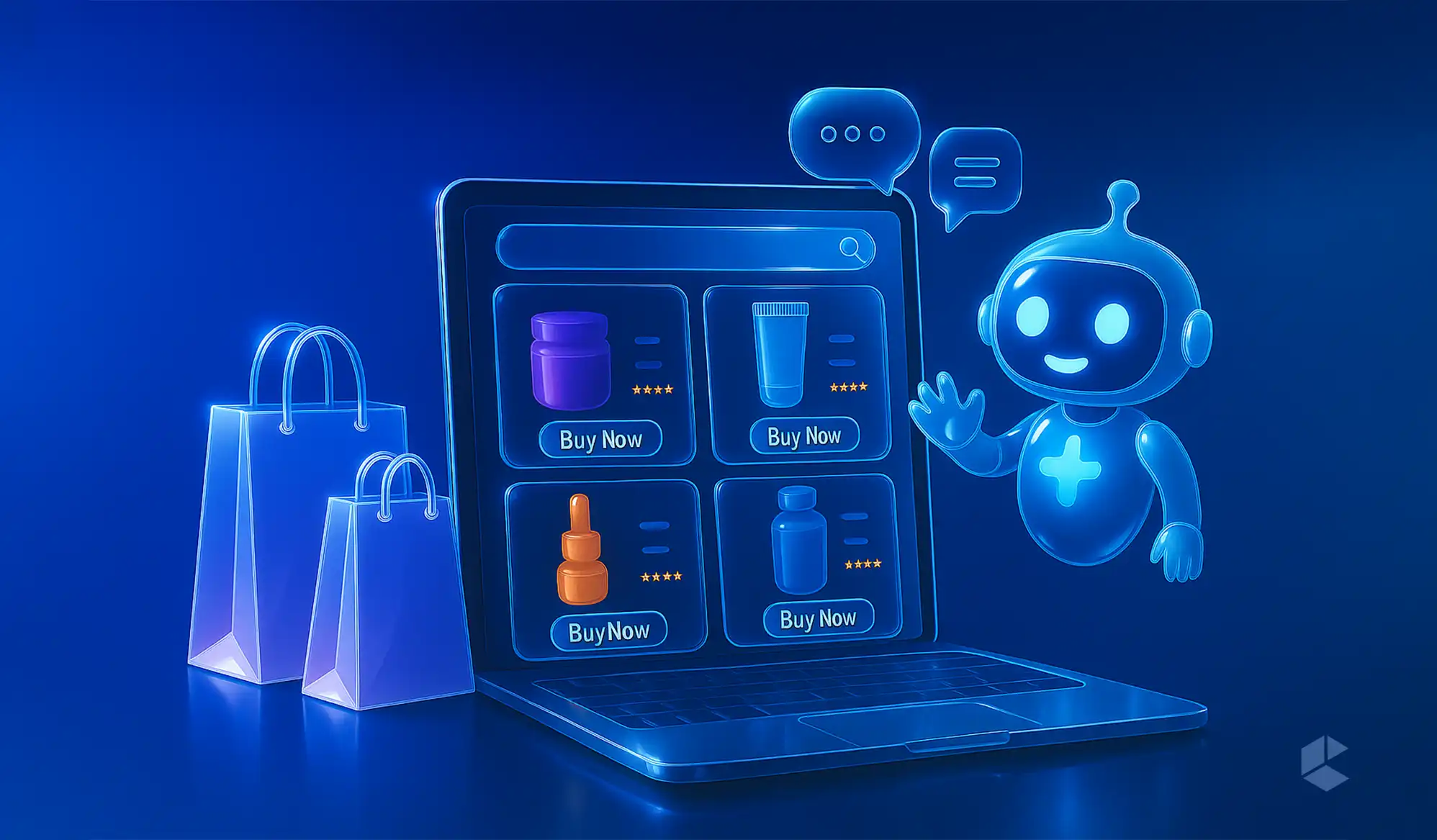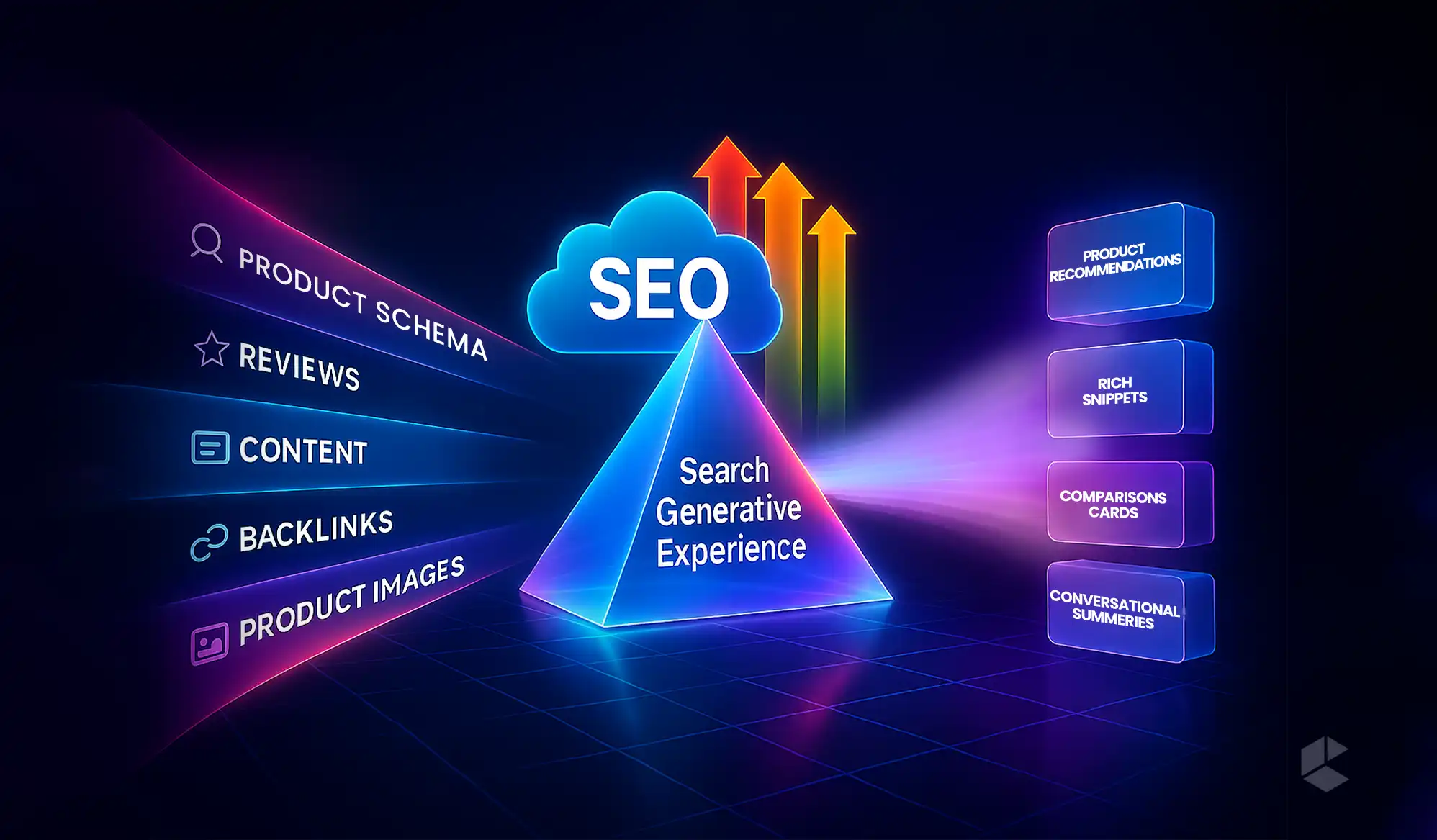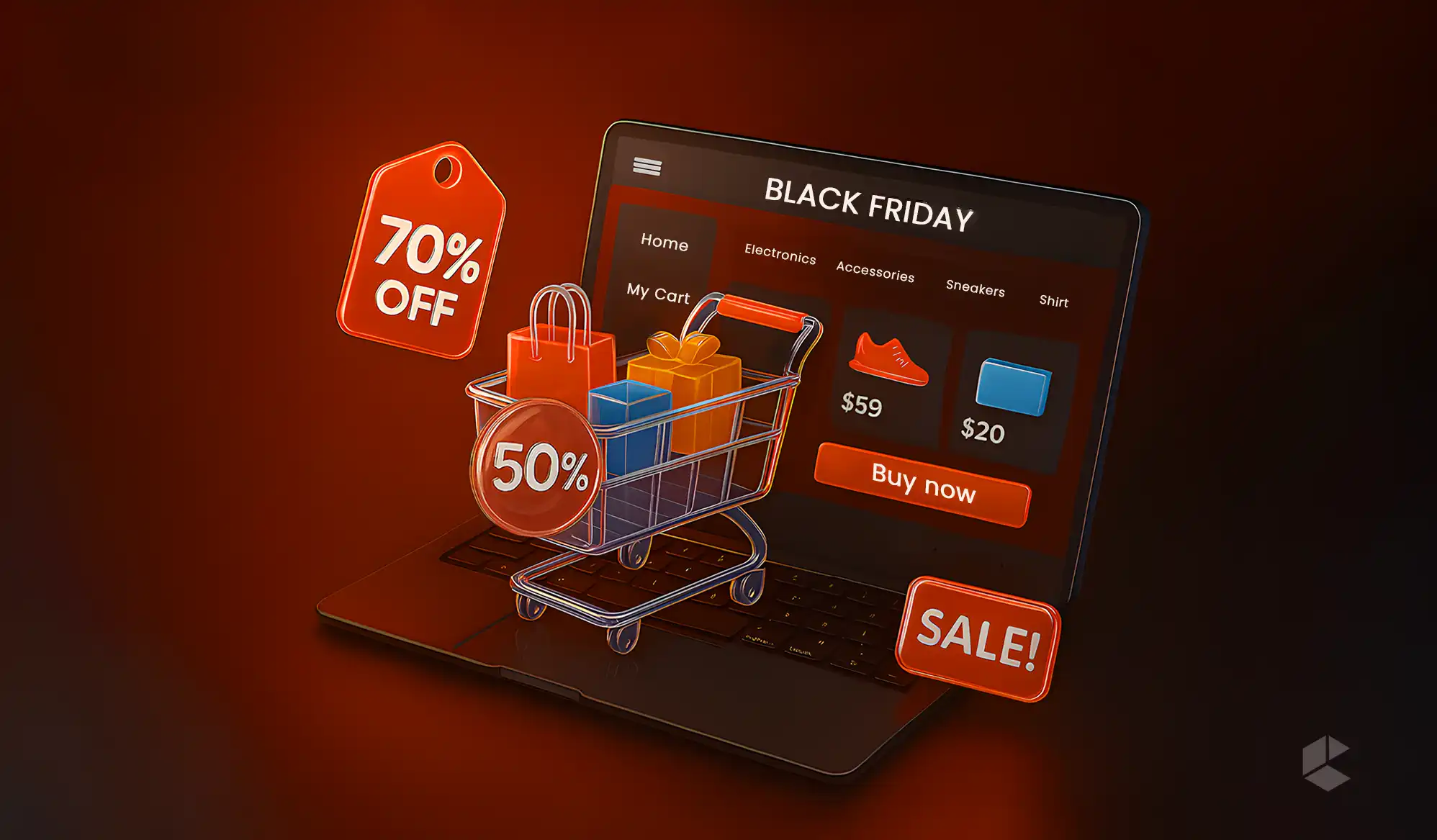- eCommerce advertising is the perfect solution if you want your product to reach the right audience and stand out in a crowded market.
- It is the practice of marketing products through paid channels like search engines, social media platforms, etc.
- To get the best results, it’s important to follow effective eCommerce advertising strategies tailored to your audience and goals.
- A successful ad campaign must go hand in hand with a high performing website experience to convert traffic into actual sales.
“Survival of the fittest.” It’s a phrase we all learned back in school. Though it was originally coined to explain how species evolve, adapt, and grow, its truth echoes far beyond the natural world.
In every system, whether it is natural or man-made, competition brings changes. It forces players to shift, respond, innovate, or be left behind. The eCommerce system is a perfect example of this. Here, every player, every brand, is in a constant battle for the customer’s attention. And those who adapt quickest are the ones who survive.
Are you one of those eCommerce brands struggling to get noticed? Then, eCommerce advertising might be exactly what you need. This blog talks about what eCommerce advertising is, its benefits, and strategies.
Let’s get started!
What is eCommerce Advertising?
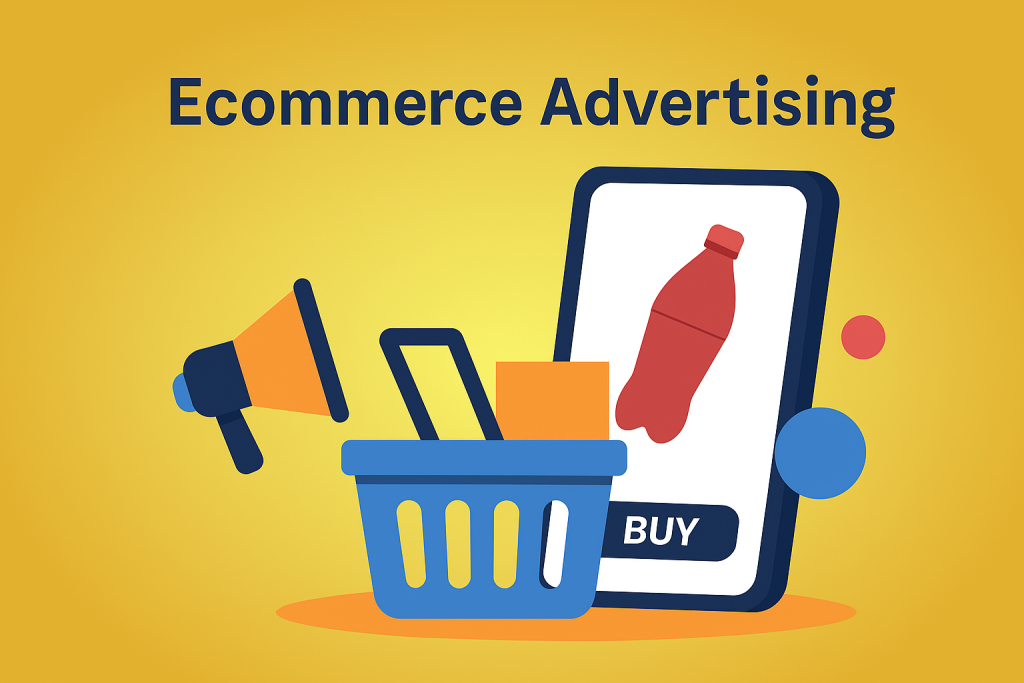
eCommerce advertising is the practice of promoting products through paid channels. These channels include:
- Search engines (like Google Ads and Google Shopping)
- Social media platforms (Facebook, Instagram, TikTok)
- Display networks (Banner ads on websites and apps)
- Video platforms (YouTube pre-rolls, TikTok ads)
- Affiliate/influencer partnerships (Sponsored content, product placements)
The primary aim of this type of advertising is to drive traffic, increase visibility, and ultimately improve sales. It basically lets your products be seen and purchased online.
Let’s see how this works in real life. Imagine that you own an online home decor store. You’ve just launched a collection of handcrafted ceramic vases and want to promote them. Here, you can follow the strategies of eCommerce advertising.
- First, run a Google Search campaign targeting keywords like “buy handmade vases online” or “minimalist home decor ideas” so that your ad appears whenever a person searches for those terms.
- You can also launch an Instagram campaign featuring aesthetic product photos or reels of home styling tips using your vases. Remember to target audiences who are interested in interior design, decor trends, etc.
- Display networks can be used to place banner ads on popular blogs and websites that your target audience visits, like DIY decor pages or lifestyle sites.
- Partnering with influencers can help you gain audience attention. Influencers can create videos or photos of themselves using your vases.
eCommerce Advertising Benefits
- eCommerce advertising helps you reach a wider audience. It helps you to make people aware that such a product exists.
- Advanced targeting options help you make sure that your ad reaches the right audience.
- Constantly displaying ads to people who are looking for products like yours increases conversion. Personalized ads can re-engage visitors who’ve browsed your eCommerce site or left items in their cart, helping turn interest into conversions.
- Pay-per-click models like the Google search ads deduct costs only for the actual clicks. This helps you to control your budget.
- Unlike other marketing techniques like organic marketing or word of mouth marketing, this type of advertising offers immediate results.
- eCommerce businesses that implement a strong advertising strategy often achieve higher sales while spending less on ads, ultimately lowering their customer acquisition costs.
eCommerce Advertising Strategies
1. Know Your Audience
The first thing you need to understand is that advertising does not just mean being everywhere. Focus on being on platforms where you can find not just any audience but your type of audience. For that, just ask yourself a question. Where does your audience spend time online? If they are visual learners, you could possibly find them on platforms like Instagram, Pinterest, etc. And, if they prefer long-form content, you could find them on platforms like YouTube. Similarly, audiences who are shopping-focused can be found on Google, Amazon, etc. Rather than spreading your budget too thin across every channel, focus on the ones that matter most to your ideal buyer. Research their habits, study your analytics, and let that data guide where you show up.
2. Group Your Audience
The nature of each of your audiences might not be the same. So, instead of showing a generic ad to everybody, try breaking your audience into smaller groups and tailoring the message to each. You can group your audiences based on their age, location, gender, purchase history, purchasing behaviour, etc.
For instance, imagine that you sell coffee accessories. Here you can promote your products to students with messages like “Ace your exam morning with our caffeine fix”. Similarly, you can promote the same item to professionals with messages like “Start every office day with a perfect brew”. Now imagine that instead of grouping your audience, you just randomly send a generic message, “Buy our coffee accessories now!” It’s vague, forgettable, and doesn’t speak directly to anyone’s needs or lifestyle. By segmenting your audience, you’re not just advertising, you’re connecting.
3. Bid on Your Brand Name
Ideally, every new brand should bid on its brand name so that it appears first when potential customers search their brand name. This protects your name from competitors who might try to outrank you by bidding on similar keywords. It also helps maintain credibility! Imagine a user searching for your brand and seeing a competitor’s ad on top. That could divert traffic and sales.
Even if your organic search ranking is high, paid ads still offer added visibility, especially on mobile, where the top results are usually ads. Brand bidding is relatively cheap and ensures you stay in control of how your brand is presented to potential buyers.
4. Launch Prospecting Campaigns
Launching prospective campaigns is all about finding new people who have never heard about your brand before. This is your chance to introduce your products to fresh audiences using interest-based or lookalike targeting.
Let’s say you sell eco-friendly skincare. You could run Facebook ads targeting people who follow sustainable beauty influencers, or YouTube ads for those watching zero-waste lifestyle videos. The key here is to focus on high-quality visuals, compelling offers, and strong messaging that highlights what makes your brand different.
5. Run a Google Shopping Campaign
Running a Google Shopping campaign allows retailers and eCommerce brands to showcase their products directly on the search engine result page. By displaying product images, titles, prices, and other relevant information, these ads let users browse and compare products in a visually appealing format.
For instance, if you are a seller of handmade coffee mugs and someone searches for “unique ceramic coffee mugs” on Google, your product could appear right at the top of the page in a Google Shopping ad, complete with a photo of your mug, its price, your brand name, and any available discount. This makes your product visually stand out among a grid of other relevant products and gives users the chance to quickly compare items without having to visit each website.
6. Strengthen Your Website Experience
No matter how good your marketing is, your sales will suffer if your website doesn’t perform well. For that reason, always make sure that your site loads fast, is mobile-friendly, and offers an easy checkout process. Your product pages should consist of clear images, engaging descriptions, reviews, and trust signals such as return policies, guarantees, etc.
For example, if someone clicks your Instagram ad and lands on a cluttered page with confusing navigation or out-of-stock items, they’re likely to bounce. Your ad brought them in, and now your site needs to close the deal.
Conclusion
eCommerce advertising is all about smartly using paid channels to put your product in front of the right people at the right time. It helps you bring your product closer to a more visible, targeted, and profitable online presence. However, one thing you have to remember is that even the best ad won’t convert if your website isn’t up to par. Every step between clicking your ad and completing a purchase should feel smooth, trustworthy, and worth their time. In a competitive world where attention spans are short and choices are endless, eCommerce advertising gives you the edge to stand out and sell smarter.
FAQs
Promoting products with the help of paid channels like search engines, social media platforms, and more is called eCommerce advertising. Its goal is to drive targeted traffic to your online store, increase visibility, and ultimately improve sales by reaching the right audience at the right time.
eCommerce advertising, first of all, helps raise awareness that your product exists and reaches potential buyers where they already are. It drives targeted traffic to your store, increases visibility in a crowded market, and accelerates sales by connecting your products with people who are actively looking or likely to be interested.
Organic marketing involves unpaid methods like SEO, content marketing, or social media engagement that attract customers over time. On the other hand, eCommerce advertising involves marketing products through paid channels. The result of this type of marketing is usually immediate. They drive traffic easily by directly promoting the products to the right audience.
The amount that you should spend on eCommerce advertising completely depends on your goals, audience size, and industry. A good approach is to start small, test different campaigns, and scale up based on performance. By tracking key metrics like click-through rate, conversion rate, and return on ad spend (ROAS), you can optimize your budget over time and invest where it delivers the most impact.
You can’t blindly say which platform is best for eCommerce advertising, as it depends on your audience. For example, Google Ads works well for shoppers actively searching for products, while Instagram and TikTok are ideal for visually appealing products and impulse purchases.


